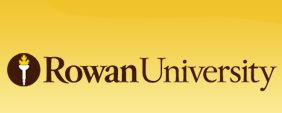Approved theses and dissertations from Rowan University graduate programs have been made available to the public on Rowan Digital Works since 2015. Theses and dissertations submitted in digital format between 2010 and 2015, or submitted in paper format between 1996 and 2010 and later scanned, are also available in Rowan Digital Works.
Theses approved between 1996 and 2010 are stored as bound volumes in Campbell Library and may also be online in Rowan Digital Works .Theses produced prior to 1996 are stored as bound volumes in Campbell Library only.
Graduating students may request an initial embargo period on public access to their work of 6 months, 1 year, or 2 years when they submit their thesis or dissertation to the School of Graduate Studies. Authors wishing to later extend the embargo period in Rowan Digital Works must contact the School of Graduate Studies for approval using the Embargo Extension Request Form.
If you are the author of a thesis or dissertation produced for Rowan University or Glassboro State College before 2010, or the Graduate School of Biomedical Sciences before September 2023, and you do not want your document to be publicly available in Rowan Digital Works, you must complete and submit this take-down form to request its removal from the repository. For more information, please also see Rowan University Libraries Thesis & Dissertation Guidance for Embargoes and Withdrawals
Theses/Dissertations from 2000
The effects of journal writing on self-concept in group therapy, Kimberly A. Moffitt
The influence of a school's schedule on teaching practices and behaviors, Ann Moore
Impact of the implementation of the New Jersey Core Curriculum Content Standards on time allocation for elementary mathematics instruction, Angela Napoliello-Ivory
Gender identity and course selection, Michele Nasife-Brown
Personality traits and addiction relapse rates: is there a connection?, Lori Sadwin O'Leary
Predictor of gender role attitudes: family composition or subject's gender, Viviann F. Olmedo
Streamlining the accounts payable purchase order procedure and approval process, Alan B. Parmelee
The effect of value instilling literature on elementary aged children, Erika S. Pello
A multicultural club at Hammonton High School, Mildred Peretti
The effect of educational placement on self-concept, Karin Dech Pescatore
A study of the effect of computer-based mastery quizzes on student learning, Darren Provine
The information-seeking experience of users in the reference section of the Rowan University library, Faye E. Robinson
Gender role stereotyping in occupational choices, Paul Michael Rodrigo
Information literacy skills: successful cross-curricular integration at the secondary level in New Jersey, Susan T. Rohrman
The impact of varying teaching style techniques to better match learning styles in the science classroom, Karen M. Santoro
Identifying the role of the school business administrator, Diana L. Schiraldi
The effects of block scheduling on students with special needs, Kimberly C. Seifring
The effects of participation in athletics on the development of high school students with special needs, Derryk Sellers
A study to determine how casual dress in the workplace affects employee morale and productivity, Marisa Avallone Sharkey
Reputation management: the effect of CEO behavior during a crisis, Ellen J. Shockley
Program accommodations made by New Jersey elementary school librarians to meet the needs of exceptional readers, Beverly S. Siti
Active collaborative teaching, Todd R. Slimm
Elementary school use of interactive distance learning, Linda Spano

